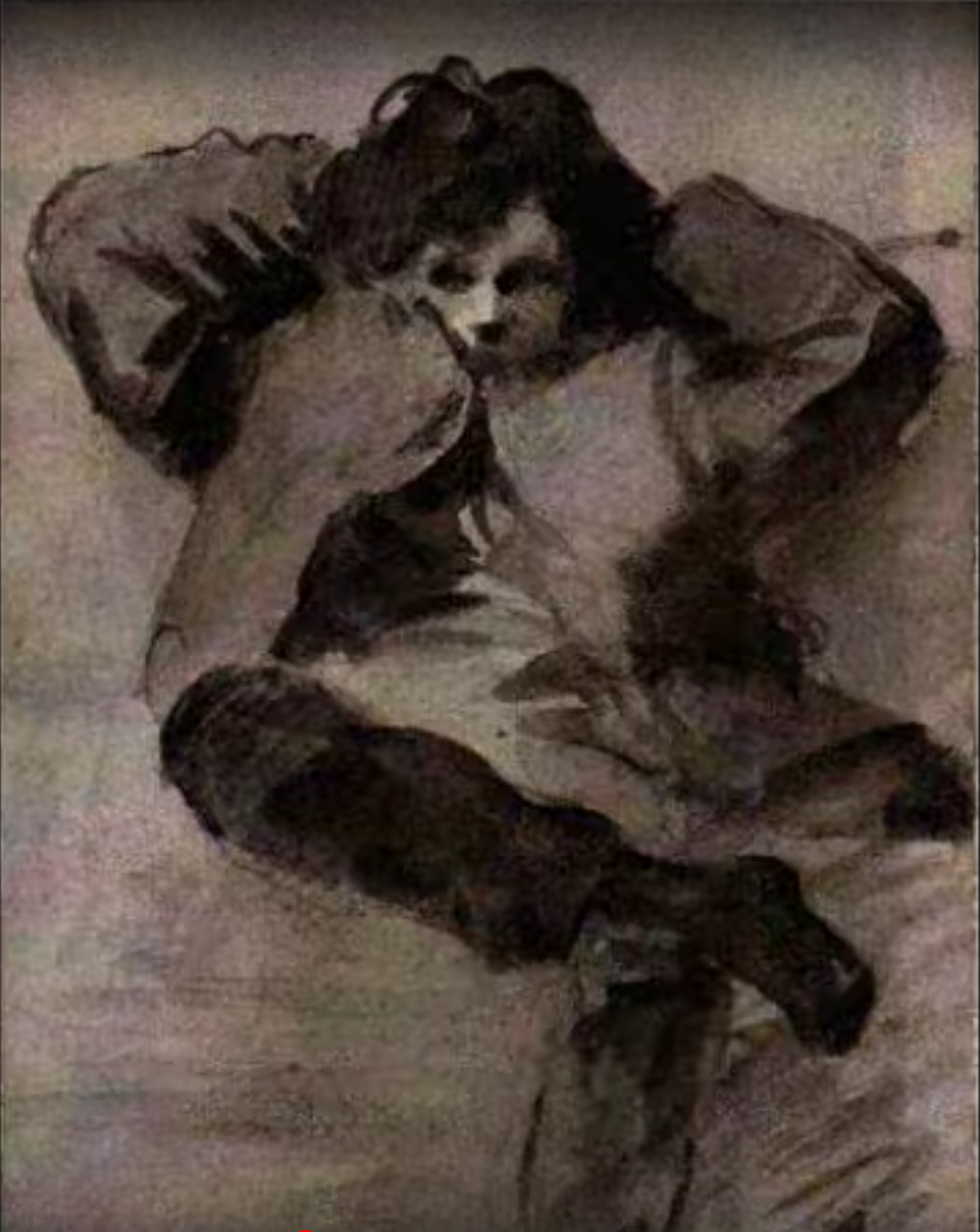
Rimbaud (in Paris) by Forain
Gold in the Soul
Perhaps in spite of the efforts of all poets literature is powerless in the modern world. Maybe that’s why Arthur Rimbaud gave up.
But did he give up?
I don’t believe that Rimbaud ever ceased to be a seer. For me his deathbed ’Aphinar’ letter proves that he never abandoned inner vision. How so? Because this last heartbreaking letter, dictated to Isabelle and addressed to ‘Monsieur le Directeur’, is really written to someone other than the corporate kingpin of the ‘Aphinar’ steamship company. (Biographers have speculated that ‘Al Fanar’ was intended – the Arabic word for lighthouse – and this seems very likely. Certainly an ‘Aphinar Line’ never existed.) With one leg amputated and his groin on fire, Rimbaud is addressing the source of all light the night before he dies in the Hospital of the Immaculate Conception. Rimbaud is talking to God on his deathbed in Marseille, asking if he has any cosmic credit left, asking if he can hope for anything after death. Naturally he frames the question in terms of business-dealings because he’s so out-of-his-mind on morphine that buying and selling become metaphors for living and dying, in the same way that ‘sailing home to Ithaca’ becomes an allegorical journey for Odysseus. In fact Rimbaud is asking in the most poignant way imaginable whether he is spiritually worth anything, whether there is still any gold in his soul. He is already in the judgment-halls of the afterlife watching the feather of his extraordinary purity being weighed against the heaviness of his experience.
If poetry has become ’an idiot’s game’ (to paraphrase Eliot) and even the ‘unacknowledged legislators’ of Shelley have been shut down, still a new world is coming.
And Rimbaud knew it.

A distressed (and Rimbaudian) waysign in Pancras churchyard
Shamanic synchronicities
I would like to enlarge on my first encounter with Rimbaud. This is a narrative I have never told though I have wanted to tell it for a very long time. Yet because of its strangeness I have hesitated, thinking always that some day or other I would write a long poem about my experience of ‘standing on the rooftop of the universe’, if I may put it that way. Now, just recently – after the Place Vendome – I feel the decision has been taken for me and I have to attempt to capture a once-in-a-lifetime moment when metaphysical windows of coincidence opened, when connective synchronicities suddenly came into play.
To begin this exploration of what happened to me many years ago I need to discuss that enigmatic area of London where Rimbaud and Verlaine lived once upon a time. This is often called Camden Town but in fact Royal College Street is halfway between Camden Town and Kings Cross (where the trains leave for Paris from St Pancras International). As a matter of fact the house of Arthur Rimbaud is only a ten minute walk from the continental terminus.
When I first engaged with the zone of St Pancras back in the winter of 1972 it was a post-industrial wasteland, an urban limbo of tinned-up derelicts where meths-drinkers burned banisters and floorboards by night, where marginals and misfits, artists and musicians congregated against the backdrop of the three-day week. I was one of several hundred maladjusted artists washed-up on an island of non-conformity. I was another Robinson Crusoe shipwrecked in the vast ocean of London. We were insular and defiant, we thought of ourselves as a Commune. We had a basement community restaurant where plates of brown rice were served for pennies every evening. We had a street-festival and a street-magazine (which I edited). An old air-raid siren mounted on a rooftop warned of squad-cars approaching down Royal College Street.
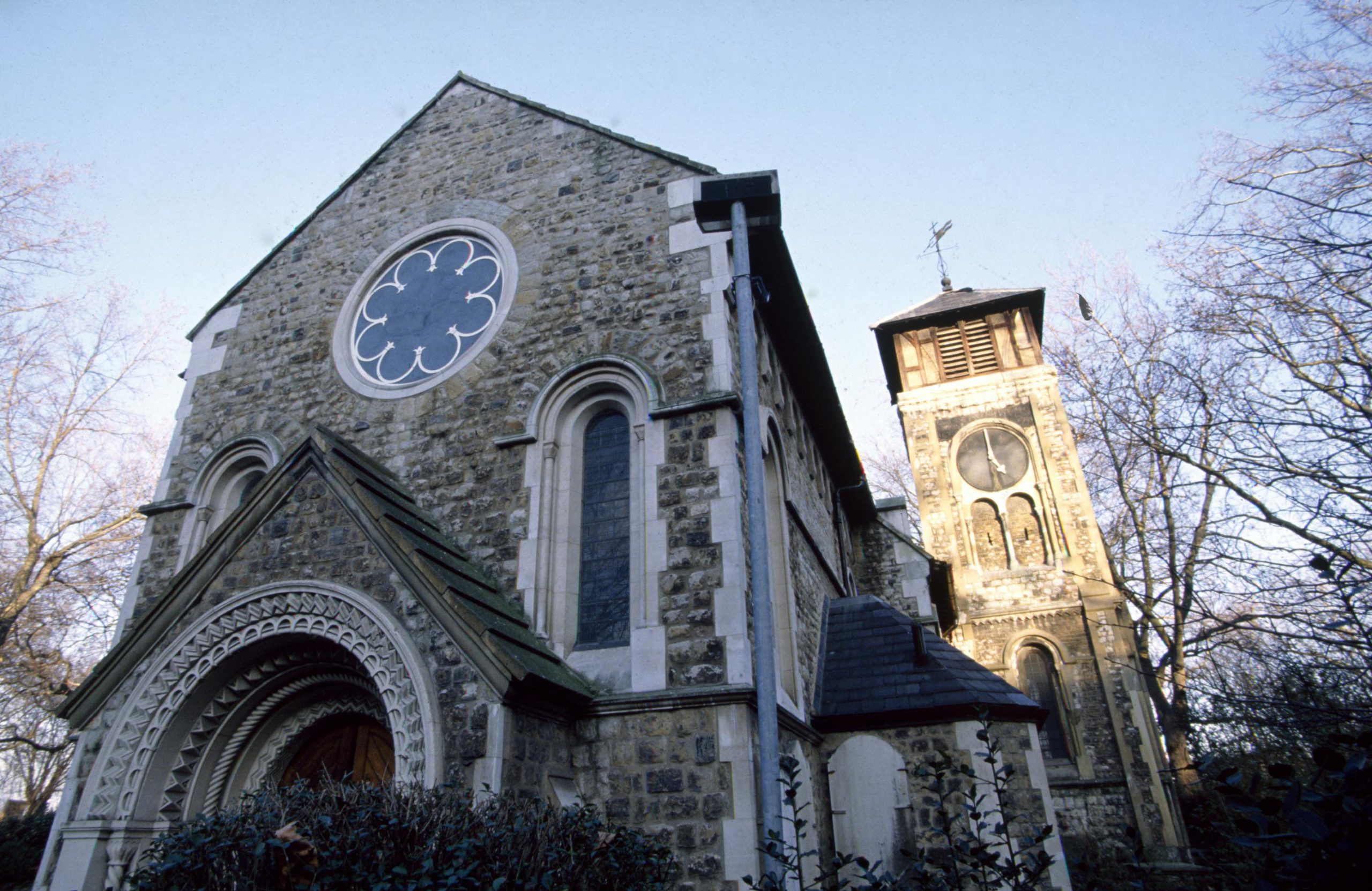
Pancras Old Church in Kings Cross. The foundation is described in Vatican archives as ‘the head and mother of all Christian Churches, under Highgate, near London’. The north-wall is made of Roman tiles, the altar-stone of St Augustine is here. The house of Arthur Rimbaud is only a few steps away.
The Arthurian Mysteries
Within eight weeks of arriving in this place I went through a lifechanging psychogeographical initiation. Later on I came to understand that many hidden forces operate in this part of London. For instance a lost river – the Old River of Wells, also known as the River Fleet – lies buried beneath Kings Cross St Pancras. Once upon a time its waters ran down from Hampstead Heath, where Rimbaud and Verlaine – like John Keats before them – loved to walk. Nowadays the lost river still flows under Royal College Street. Running south it continues beneath St Pancras Old Church and joins the Thames beside St Paul’s Cathedral (where the watercourse gives its name to Fleet Street). In antiquity the Fleet river was regarded as sacred. The Pancras Waters were bottled-up in wooden bottles and sold all over Elizabethan London in Shakespeare’s times. The chalybeate waters of the Old River of Wells were reputed to be healing and restorative. Spas were distributed all along the river’s length. But with industrialization the holy river was buried alive and forgotten. By the end of the 18th century it had more or less disappeared. (In certain places – like Argyle Square where Rimbaud stayed in 1874 – you can still hear the lost river running under the streets.)
Kings Cross St Pancras has another magical aspect. The zone is surrounded by a ring of fire-hills. These ‘high places’ were ritually sanctified long before Christianity arrived in Britain. Primrose Hill and Parliament Hill, St Michael’s Mount and the Penton of Pentonville circle Kings Cross St Pancras as places of power. (Underneath the Penton is the mysterious earth-chamber known as Merlin’s Cave, linked to the Arthurian cycle playing out in London.) What vitalities are we attributing to these high places? Today we talk of terrestrial magnetism and atmospheric electricity, telluric forces and geomantic phenomena. But ancient pagan poets would have had described such cyclic and cosmic energies differently. In dynastic China they would have sung of dragon-forces and dragon-roads. Walking the ‘lung-mei’ with drummers and dancers they would have written poems about ‘escorting the dragon through the land’.
Antiquaries have detected significant remains of megalithic structures in Kings Cross. (When Stephane Mallarme visited this area some time after Rimbaud’s stay, he was shown what he was told was ‘the oldest wall in Britain’.) Legends of London mysteriously refer to two ancient cities underneath Kings Cross. These are Troynovant and Cockaigne. From the older of these two cities, Cockaigne, the Cockneys of London derive their name. Later, as described in the old chronicles of Britain Troynovant was founded by the Trojan exile, Prince Brutus (who also founded Paris, named after Helen’s lover). According to the chronicles Prince Brutus gives his name to Britain and builds his city in the area now known as Kings Cross. (In The Faerie Queene Edmund Spenser says that Troynovant – New Troy – is built ‘in the hollow of the hills under Highgate.’)
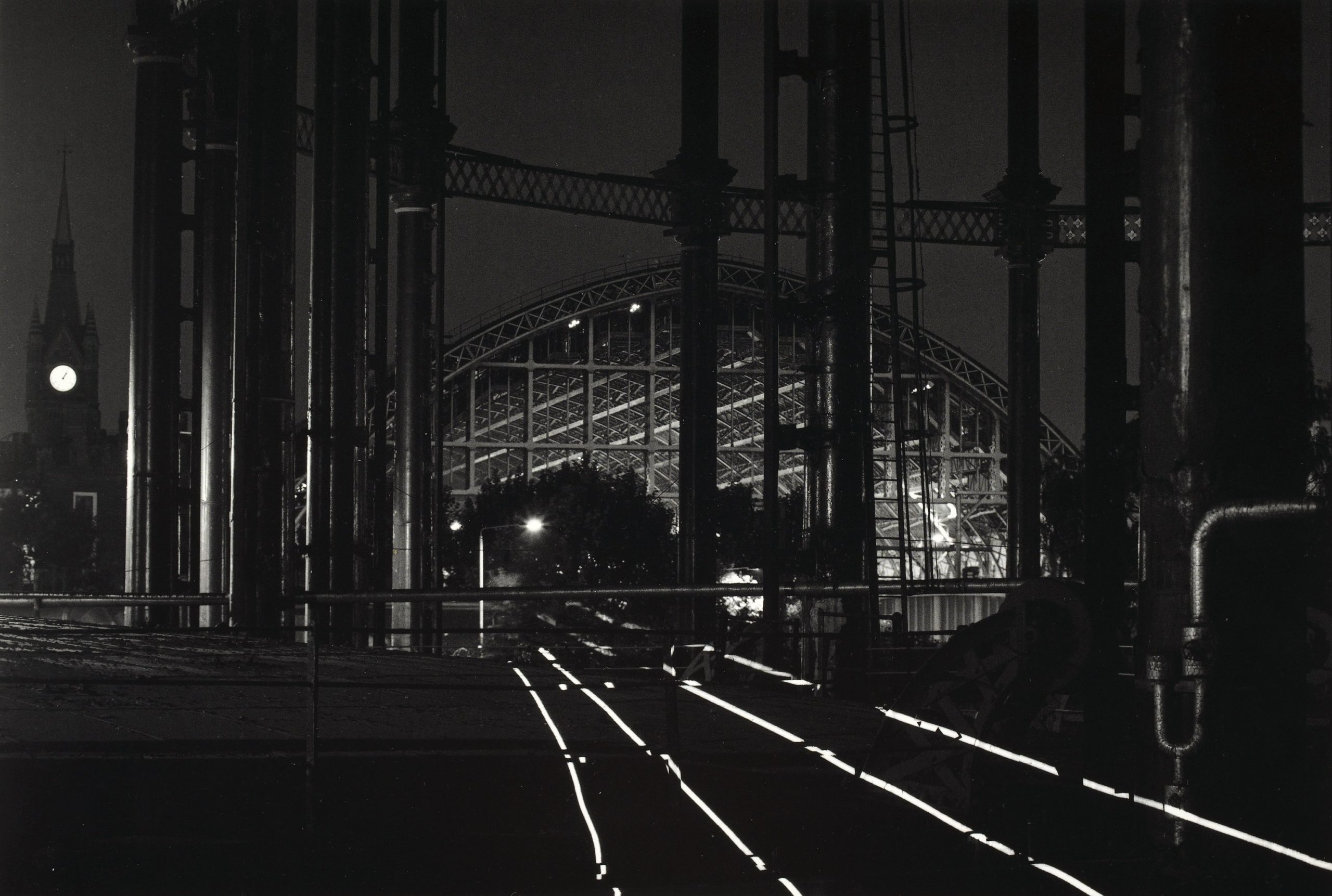
Laser tracks for future trains? St Pancras Railway Hotel (built 1872). Image from ‘Crossing Kings Cross’ by Magdalena Jetelova.
The Pirate-Ship
These are some of the hidden aspects of the zone of London where I found myself cast away. All of these forces – as I am now aware – played some part in my initiation. But it took a shaman to come and clear my vision, to open my path in one vertical moment.
In the winter of 1972 I was passing through an abyss of depression after a self-inflicted catastrophe had suddenly ripped my young life to shreds. I had seriously damaged the tendons in both arms by overpracticing the classsical guitar. (Chromatic octave scales, difficult on the fretboard, actually triggered my self-created disaster.) Unable to play any more – hardly able to speak – I found myself on Desolation Row, living in the derelict houses behind Kings Cross.
One morning in February 1973 I stood on a rooftop overlooking Kings Cross reading Arthur Rimbaud’s Illuminations. (I still have the edition I held in my hands the day everything in my life changed forever.) I was reading Promontoire. Suddenly I looked up from the page and saw the parallels! The landscape of Kings Cross echoed the text. The skyline of London was encoded into Promontoire.
‘The golden dawn and the tremendous evening find our brigantine anchored out in the roads, opposite this villa and its dependancies, which form a promontory as extensive as Epirus and the Peloponnesus, or as the large island of Japan, or Arabia! Temples lighted up by the return of theories, tremendous views of modern coastal defences… and … railways flank, hollow out, and dominate the outlay of this hotel…’
I knew nothing of Rimbaud’s life at this point. A week or so earlier I had discovered his poetry (through Antony Scaduto’s biography of Bob Dylan). Knowing not one thing about this poet whose poem had just capsized reality I ran that winter’s day to Compendium (a wonderful bookshop in Camden Town that seeded the development of Camden Lock). There I found the famous Enid Starkie biography (still perhaps the deepest study of this poet). I took it ‘home’ to my derelict and suddenly forgot all my terrible devastation. My insanity and my self-pity vanished as I turned the pages of that magical book. Some time after midnight – in a thunderstorm – I came to the chapter called The Brussels Drama. With an astonishment even greater than I had experienced on the rooftop I now saw Arthur Rimbaud and Paul Verlaine appear out of sulphurous Victorian fogs and take up residence at 8 Royal College Street.
Their address was printed on the page right in front of me.
Now I was given to understand that a hundred years previously the poet who wrote Promontoire had actually lived here in Kings Cross St Pancras! I knew Royal College Street, a hundred yards from my derelict. Running out in the midnight rain I found the house. It was a decrepit Georgian affair with an utterly unique parapet which unmistakeably suggested the bow of a ship.
The brick of Promontoire!
The brigantine!
The pirate-ship.
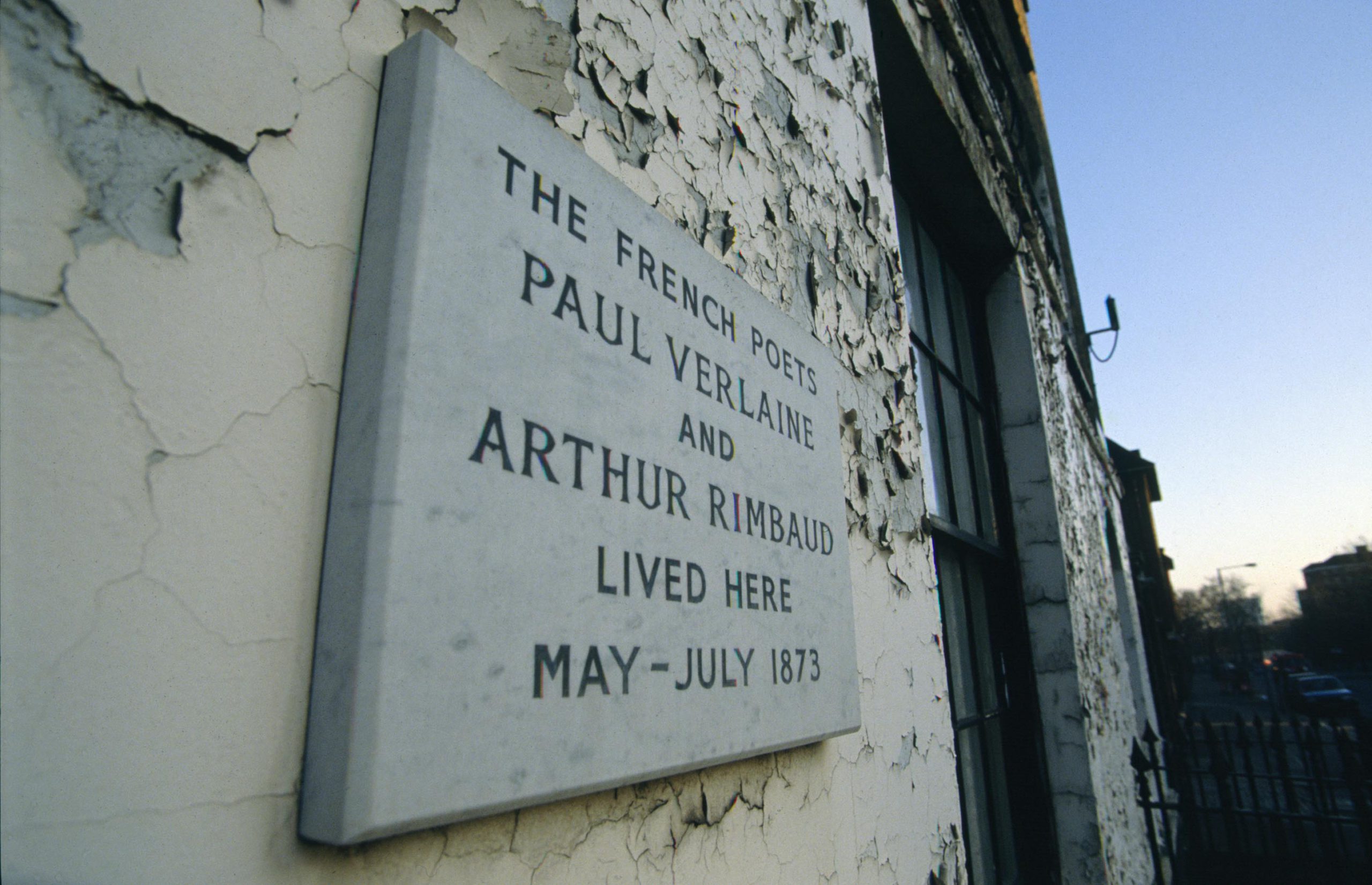
The bespoke plaque commemorating Rimbaud and Verlaine’s stay in Somer’s Town in 1873. This appeared on the house in the early 80’s, the gift of two mysterious – and forever anonymous – brothers. (Official plaques are usually circular and blue.)
The Promontory Palace
All followed from the revelation on the rooftop of my derelict. Rimbaud pointed the way and I had to follow.
From him I learned that Baudelaire’s mother was born in Kings Cross (nee au Somer’s Town). Through him I learned that William Blake made Pancras Old Church the centre of his London cosmology, the midpoint of his revolutionary Jerusalem, city of imagination and political freedom. From him I learned that Pancras Old Church is the seed-foundation of the Celtic church. Through Rimbaud I learned that Thomas Chatterton had fallen into an open grave in Pancras churchyard only three days before his death (at the age of seventeen!). From Rimbaud I learned that Shelley had passed through some kind of supernatural gateway here, an experience which utterly changed this poet’s life. Through Rimbaud I learned that WB Yeats had lived in Kings Cross for twenty-three years, the mystical years of his most esoteric work, A Vision. And from Rimbaud I learned that the Order of the Golden Dawn (Promontoire again) had its inner temple next to Pancras Old Church.
As William Blake says, drawing a rectangle round Kings Cross:
The fields from Islington to Marybone
to Primrose Hill and St John’s Wood
were builded over with pillars of gold
and there Jerusalem’s pillars stood.
Even the ‘Japanese tree‘ of Promontoire I found in Pancras Churchyard (where Thomas Hardy’s initiation took place). Even the laundry ‘surrounded by German poplars‘ I found, though it’s gone now (gone, but not forgotten). And of course, as I saw initially from the rooftop, the Palais Promontoire (the Promontory Palace) is Scott’s Pancras Railway Hotel, completed in 1872, the year of Rimbaud’s first visit to London. (Naturally the Palais is the whole universe too, but that doesn’t preclude its foundation in this world. In fact it’s more alchemical to think of this double-aspect.) From the top floor – or the roof – of 8 Royal College Street this magnificent neo-Gothic monstrosity would have completely dominated Rimbaud’s skyline.
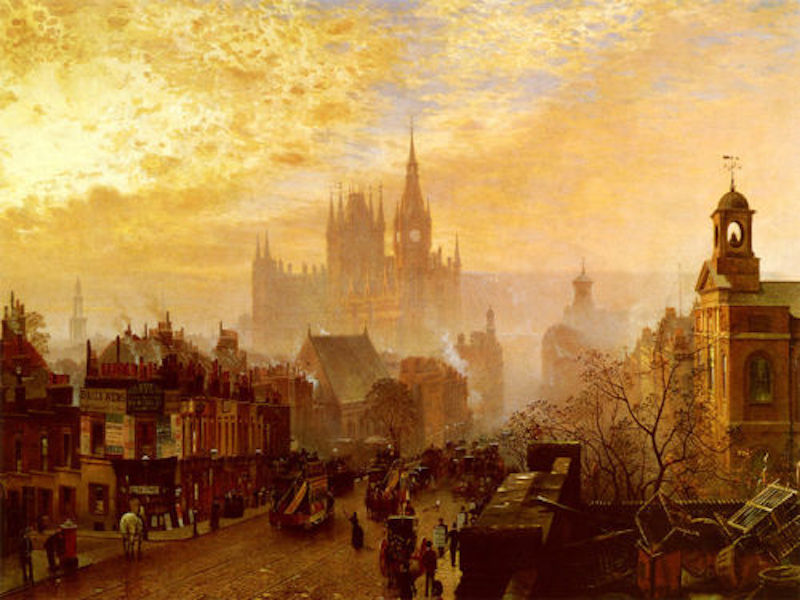
From Pentonville Road looking west: evening (1884) by the Irish painter John O’Connor. This painting shows St Pancras Railway Hotel much as Rimbaud would have seen it 11 years earlier, except that his view would have been looking south.
Pancras: Transcultural Sunchild
In my rite-of-passage Rimbaud wasn’t pointing at himself. Via Promontoire he directed my attention to St Pancras. And as I pursued many lines of enquiry into the subject of earth-mysteries and ancient cosmologies I always came back to one primal question: Who was Pancras?
(This question always leads me back to Rimbaud.)
Pancras is the androgynous mystery-saint of Christianity, the patron-saint of teenagers and truth. And if one traces the beginnings of Christian symbolism in Egyptian cosmology – an extremely fascinating thing to do – Pancras becomes identical with Horus, the child-deity of the Egyptian trinity. Similarly, in the oldest creation-myth of China, Pancras becomes the child-demiurge, Pan Ku, who dies an early death – self-martyred – exhausted by prodigious acts of creation. (Sound familiar?) He is the transcultural Sunchild of all cosmologies, spontaneous, exuberant and androgynous. He/she is the divine child: the inner child at the collective level.
Based entirely on the revelation on the rooftop I worked obsessively for twenty-three years on the theory of my epic poem Vale Royal. Much of that time I lived like an urban gypsy, a scholar of the derelicts. (Once, just for fun, I calculated that over a period of sixteen years I had lived in nearly a hundred different addresses. In those days books were my only ballast. When an eviction-order came one loaded one’s library into a taxi and moved on.)
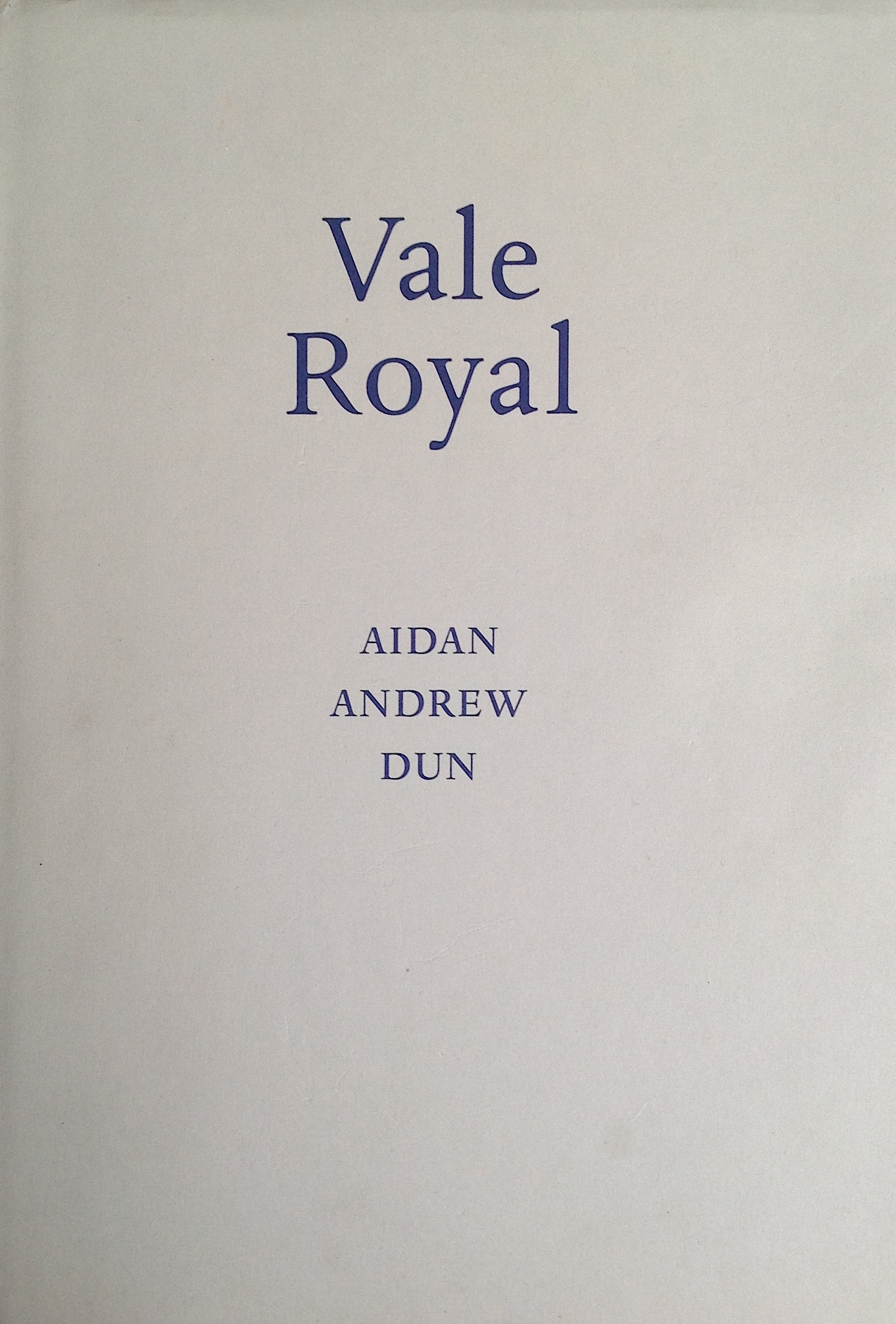
Vale Royal (Goldmark, 1995) about which the Nobel Laureate Derek Walcott said: Vale Royal moves with the ease and the clarity of a fresh spring over ancient stones, making its myths casual, even colloquial – an impressive achievement.
The Patron Saint of Teenagers and Truth
As surely as if he dictated it himself my epic poem Vale Royal came to me through Arthur Rimbaud. At long last – and after a terrible battle – the poem was published by the only man in England who would publish it – Mike Goldmark – printed by Martino Mardersteig at the Stamperia Valdonega in Verona – the finest printing press in the world – and launched at the Royal Albert Hall in 1995. Allen Ginsberg did me the honour of coming over from New York specially for the launch, and he and Paul McCartney performed Skeletons in the White House that night, McCartney riffing on guitar as Allen rapped his rebel lines to the beat.
Fifteen years after the launch of Vale Royal I chained myself – with fellow-poet and Rimbaudian Niall McDevitt – to the railings of 8 Royal College Street to stop the house of Arthur Rimbaud being gutted for flats. And, thanks to our timely intervention (and some help from Graham Henderson of the Rimbaud and Verlaine Foundation) the house has been perpetually willed to the British nation – and more importantly saved for the planet – as most significant shrine of modern poetry.

The house of Arthur Rimbaud today, showing the ‘prow’ of the ‘brick‘, the brigantine. (I am not aware of any other Georgian house in London having a similar pyramidical feature.) A brigantine was a small two-masted vessel often associated with piracy. It is believed that Rimbaud and Verlaine occupied the top floor at number eight.
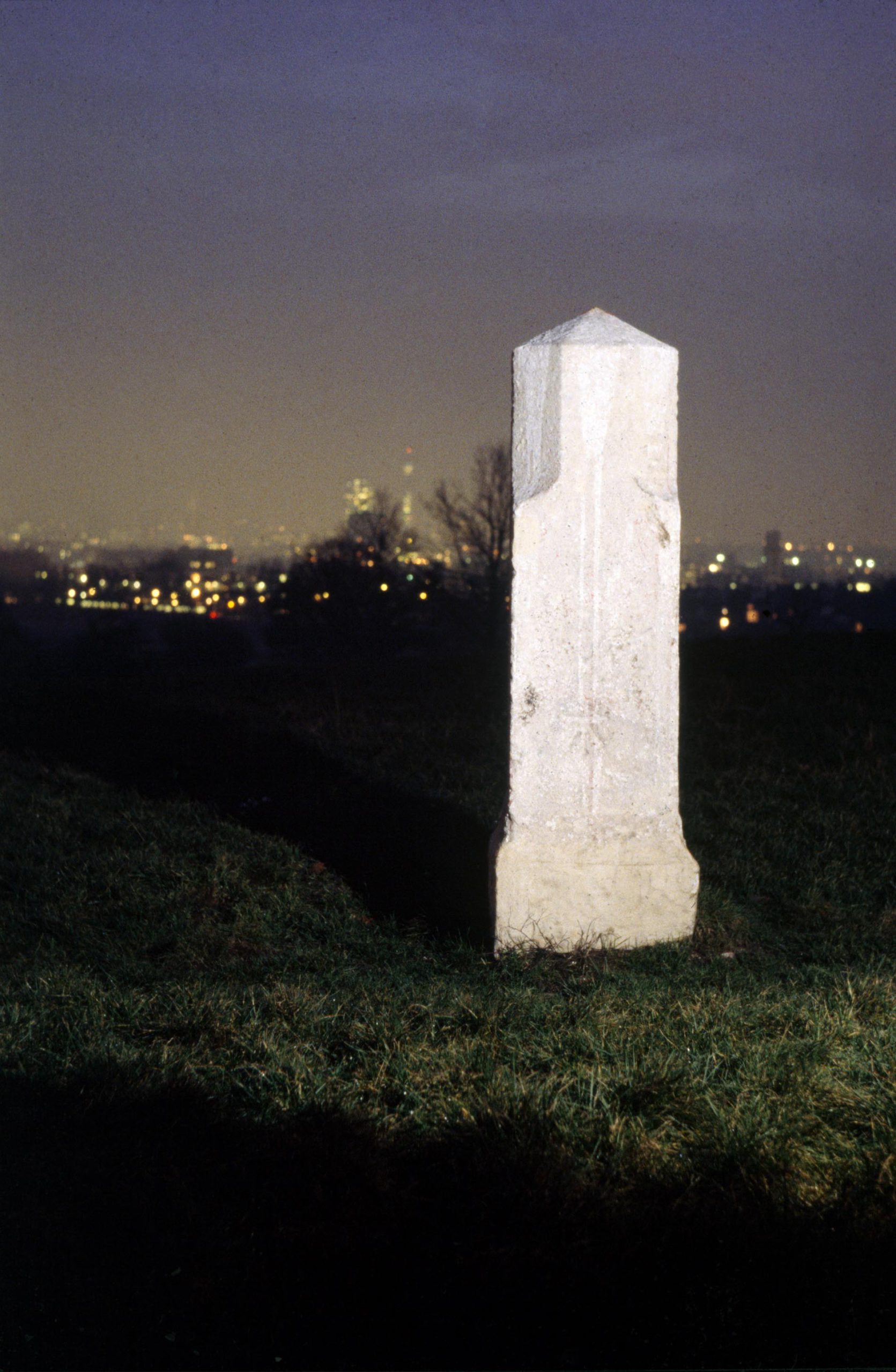
Octagonal Stone of Free Speech on Parliament Hill overlooking Kings Cross St Pancras, an atavistic marker referencing the open-air parliaments of the pre-Christian Druid religion.


Bless you, dear Aidan, for your inspirational soul and text.
Et grand merci, mon ami.
I’m truly touched to receive such words – and their coming from France makes the experience even more moving.
Thank you, dear Jean-Marie.
Rock on, Arthur Rimbaud.
Wonderful, Aidan!
Glenn, fantastic.
Wonderful to encounter the story again, particularly in the lockdown when I am missing my favourite London haunts, especially The House in Royal College St and St Pancras. Inspired me to look further into the stories of Pancras. Great to stay in touch.
Chris, your chime here is appreciated. Stay tuned for ‘The Golden Dawn’. Rock on, Rimbaud!